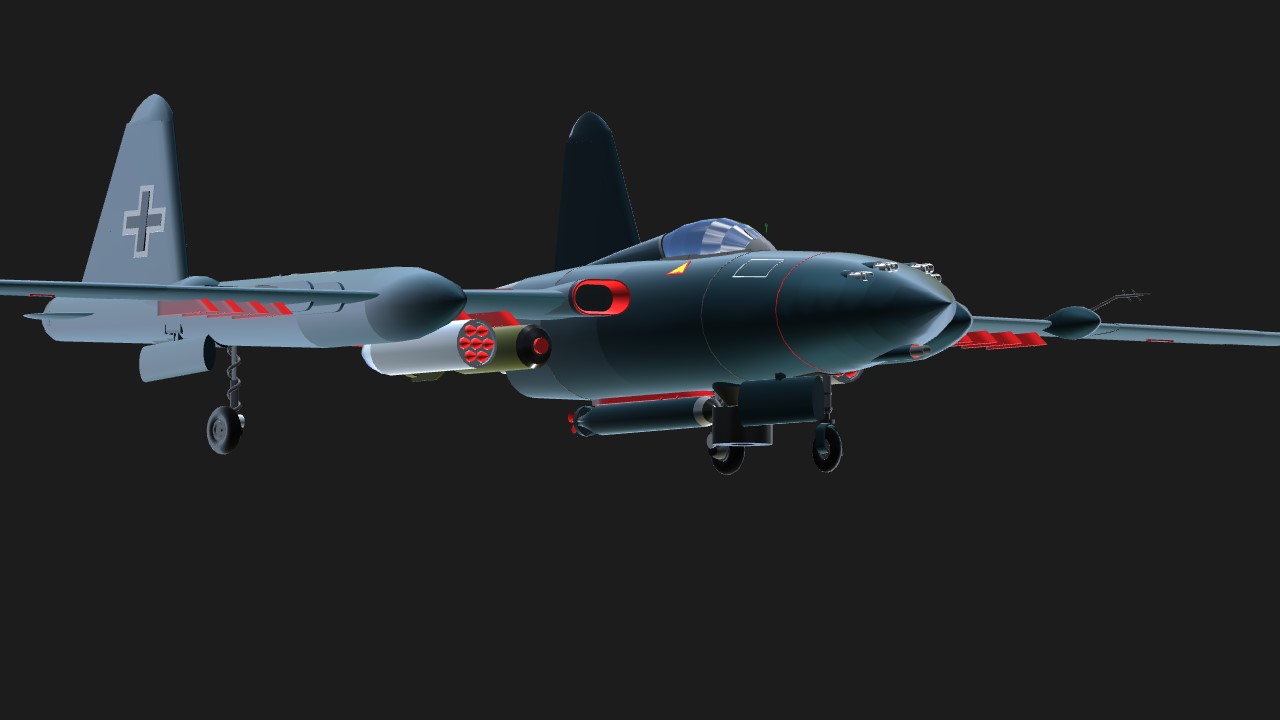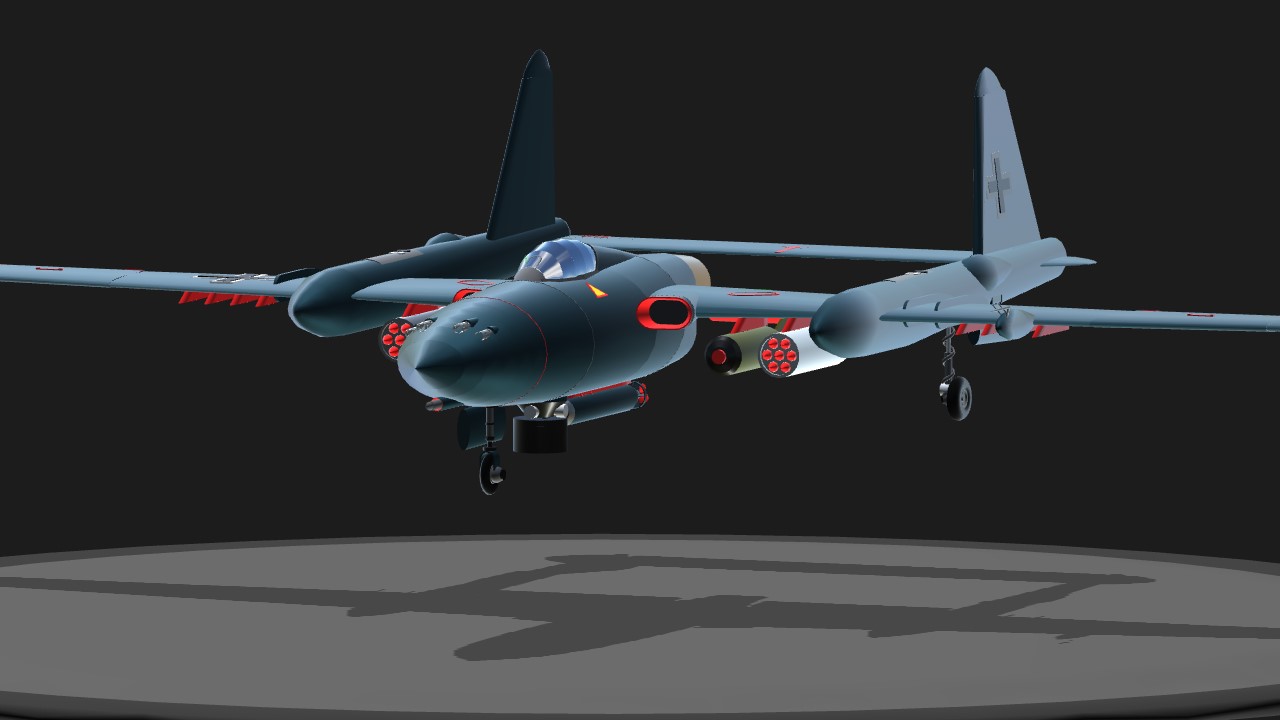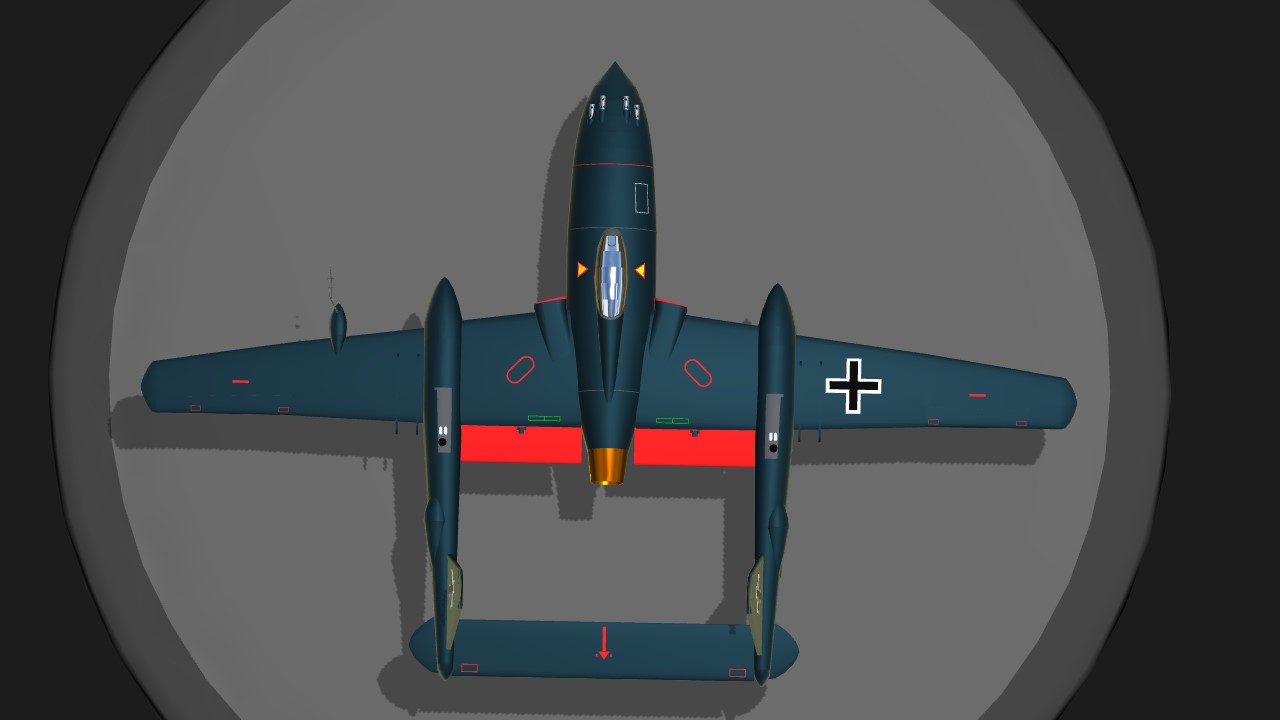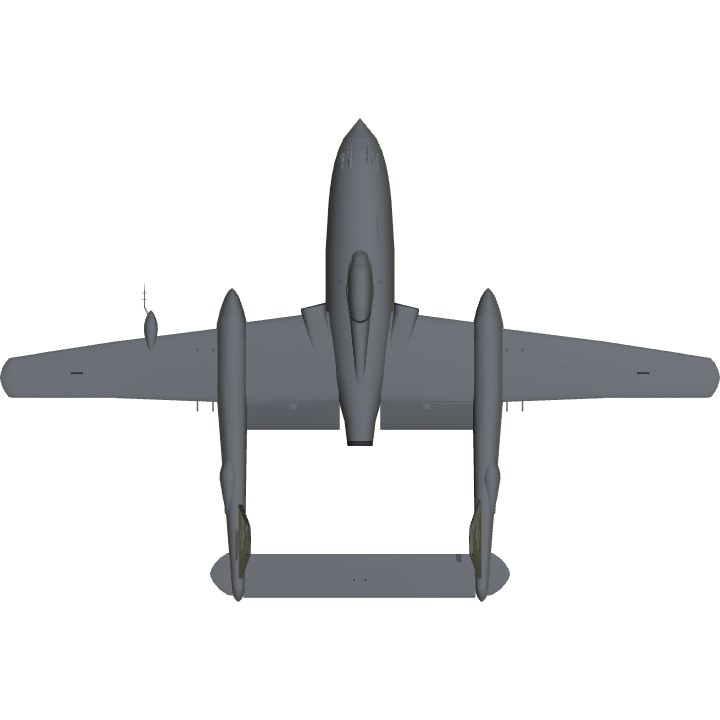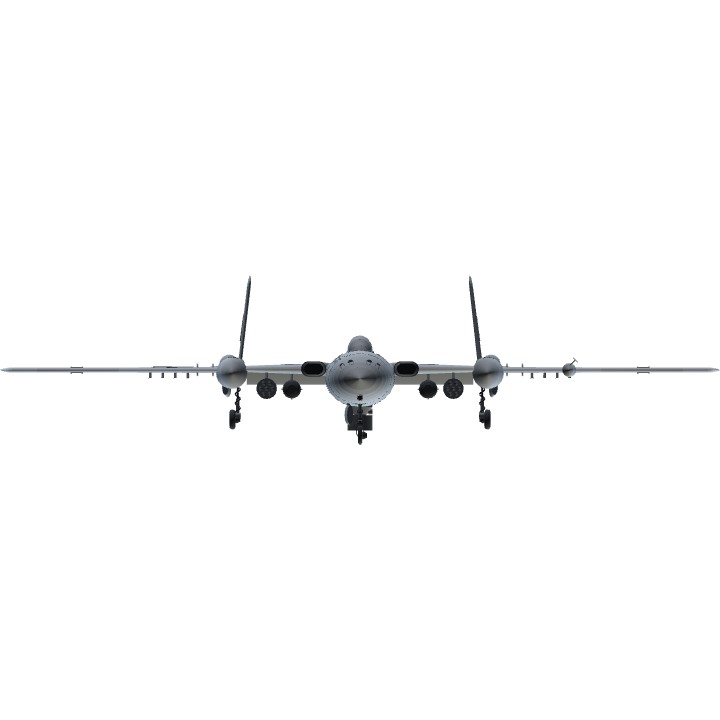”The Wolf, is the pilot... not the plane. The [jet] is merely the teeth and claws.”
-Abelard Watserhiem, Head of the “Wolf Pack” project.
Controls:
•Basic flight controls
•Trim for pitch trim
•Basic weapon systems
•Gear for gear and flaps
•Group one for afterburner
•*Brake for air brakes *
Features:
-High detail
-Mobile friendly
-Simple features
-Excellent flight handling
-Heavy firepower
-Motorized and balancing bombsight (courtesy of @SnoWFLakE0s)
History (fictional):
The “Wolf Pack” project was initiated in 1942 due to the recent release of the P-38 Lightning. At the time, the P-38 was dominant in the skies due to it’s forward nacelle mounted cannons. Tuning wing guns to collide at a certain distance wasn’t an issue. It was just literally point and shoot. The Messerschmitt aircraft corporation decided to pounce on this immediately, and “improve” the P-38’s design. Production and testing was long and costly, due to the experimental nature of their jet engines. It has to sit around 3 1/2 feet behind the cockpit, including a heavily warped intake system to compensate. The prototype of the Messerschmitt 262 crafted the forward nacelle for the Wolfhound, practically, leaving enough room in the bottom for a explosive repeating cannon. And so, in November of 1944, the Messerschmitt Bf 217 Wolfhound was introduced to the German air armada.
Stats:
Top Speed (service ceiling): 1150mph
Top speed (sea level): 555mph
Armament: x2 Blaziarch bombs
x2 AG-14 Rocket Pods
x4 Forward mounted cannons
x1 Zietrighst Repeater cannon
x1 Mk 6 torpedo
Specifications
General Characteristics
- Successors 1 airplane(s)
- Created On iOS
- Wingspan 47.0ft (14.3m)
- Length 31.6ft (9.6m)
- Height 11.1ft (3.4m)
- Empty Weight 4,535lbs (2,057kg)
- Loaded Weight 17,216lbs (7,809kg)
Performance
- Power/Weight Ratio 0.652
- Wing Loading 91.0lbs/ft2 (444.4kg/m2)
- Wing Area 189.1ft2 (17.6m2)
- Drag Points 4324
Parts
- Number of Parts 224
- Control Surfaces 6
- Performance Cost 996

